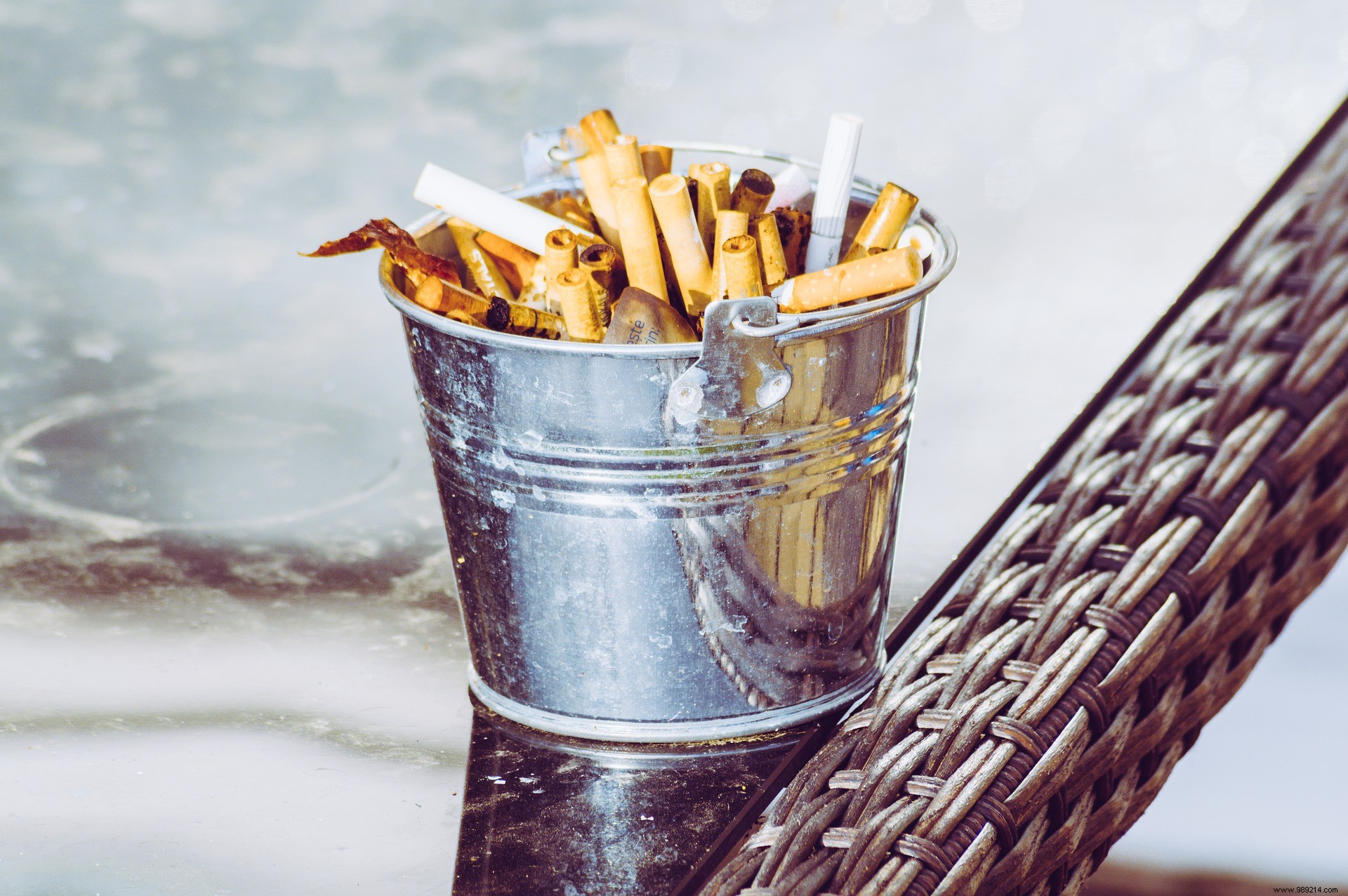A study reveals that non-smokers could be exposed, more than expected, to toxic products released by so-called "third-hand" tobacco smoke.
A tobacco smoker goes outside, takes a few steps on the sidewalk and quietly lights his cigarette. A few minutes later, he switches it off and returns to join his friends inside a bar or restaurant, for example. On paper, this person did nothing wrong. After all, she complies with current rules and current social norms.
A new study published in Science Advances reports, however, that even these smokers, no matter how well intentioned, could harm the health of those around them.
There are three types of tobacco smoke. So-called primary smoke, on the one hand, is that which is inhaled by smokers while they are in direct contact with the cigarette. Secondhand smoke, on the other hand, consists of the smoke exhaled by smokers and that released by the cigarette itself when it is lit. Finally, so-called third-party smoke is that which remains trapped in the hair, skin, clothing, walls, etc.
While the dangers of first-hand and second-hand smoke are fairly well known, little research has yet been done on the impact of third-hand smoke on health non-smokers. Researchers from Yale University (United States) and the Max Planck Society (Germany) conducted a small experiment in a cinema German, in Mainz. A non-smoking establishment for 15 years and relatively well ventilated.

As part of this work, chemist Roger Sheu and his colleagues measured the levels of toxic products released by cigarette smoke (which was necessarily third-hand) during dozens of film screenings. They then isolated relatively high concentrations of 35 different compounds, including benzene .
These concentrations, moreover, systematically increased as soon as a new audience entered the room.
The pollutant levels would then drop steadily during the projection, in part because these compounds tend to release less over time, and then rise again at the end from the movie when the audience was preparing to leave the room. The researchers suggest that changes in clothing (putting on your coat, for example) could explain this rebound.
Interestingly, it was also found that pollutant peaks were much higher during screenings of adult action movies , rather than during screenings of more family films. This could be explained by the fact that films for young audiences attract fewer smokers to cinemas, since there are more children who frequent them.
Finally, note that exposure to pollutants was not homogeneous in the room. Quite logically, people sitting next to a smoker were more affected.

This study has only focused on a cinema here, but there is no doubt that other relatively confined public spaces , such as public transport, classrooms or offices, could also be affected by the dangers inherent in this third-hand smoke. Likewise, parents who smoke outside their home or apartment could unwittingly expose their children to contaminants.
Today it remains very difficult to determine the true health risk of this third-hand smoke, which is why further work is therefore necessary. However, what we now know is that we may be exposed to it more than we thought.
Source
Related articles: